MARIANI’S
Virtual Gourmet
April 5, 2020
NEWSLETTER
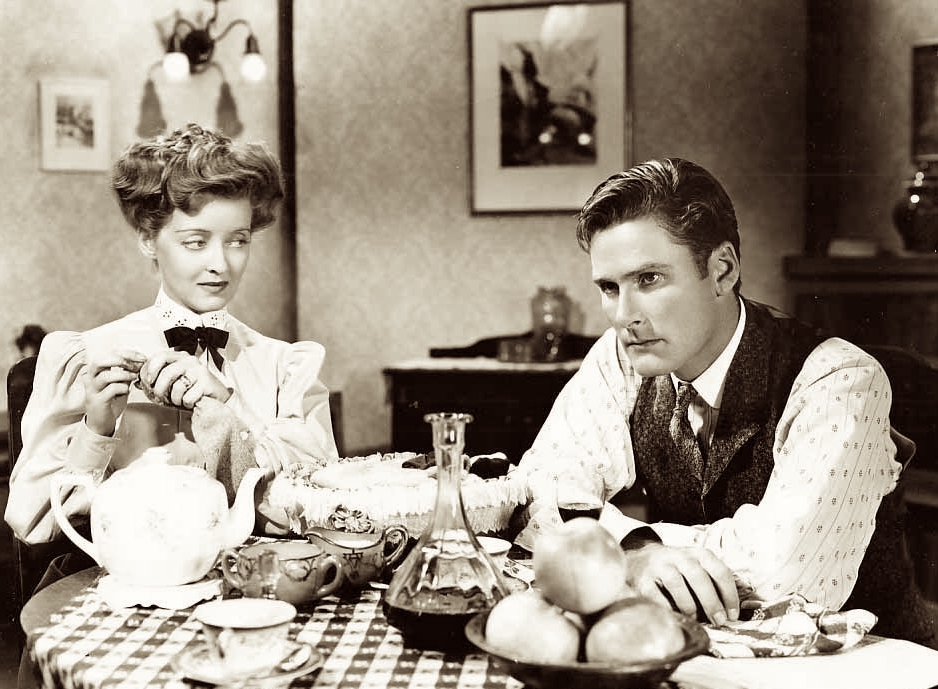
❖❖❖
IN THIS ISSUE
GREAT FOOD MOVIES FOR WHEN
YOU HAVE TO STAY INSIDE
By John Mariani
NEW YORK CORNER
LOVE AND PIZZA,
CHAPTER TWO
By John Mariani
NOTES FROM THE WINE CELLAR
THE WINES OF UMBRIA
By Patricia Savoie
❖❖❖
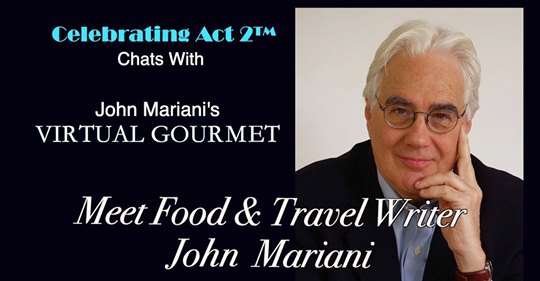
CELEBRATING ACT 2™
I'm happy to announce Ive joined an old high school buddy, John Coleman, who became a video producer in his new venture "Celebrating Act 2," as food, wine and travel commentator. The show is intended to show how those of us halfway through our lives are as excited as ever about the future and what to do with it. https://www.youtube.com/watch?v=MmAmnzLKp-A&feature=youtu.be&fbclid=IwAR10K3iJjj8SfpqcVK1I9Bc09pAdKvEd-PySNjnK1UnFSutYczFWTaXHsCg
❖❖❖
GREAT FOOD MOVIES FOR WHEN
YOU HAVE TO STAY INSIDE
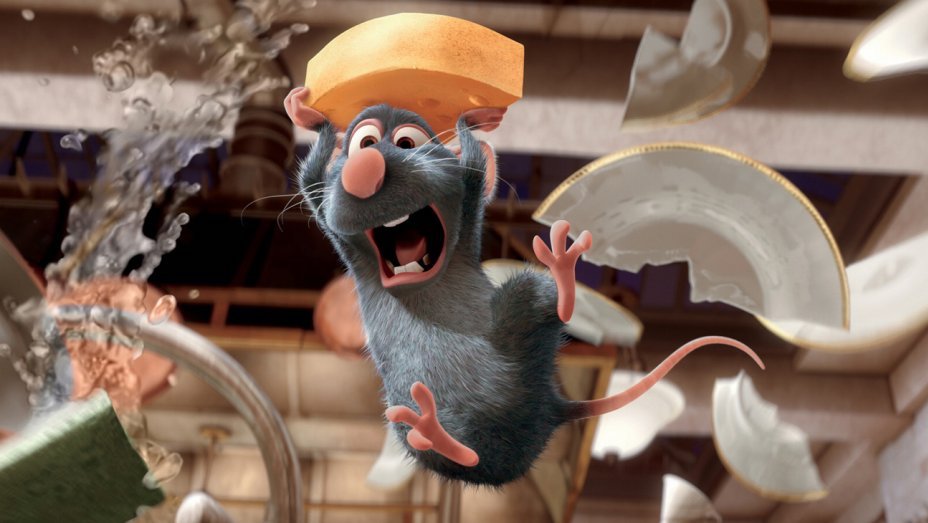
"Ratatouille" (2011)
Since the joy of eating out has been dashed by coronavirus quarantines, perhaps the best way to get in the spirit of sharing food is by curling up with a glass of wine and watching food-related movies. Many of the best are in fact set in restaurants, and you can watch again and again for what they tell us about the seductive interplay of food and wine, cooking and canoodling, elation and exhaustion. Here are my faves.
 Woman on Top (2000)—The
breathtaking Penelope Cruz plays a brilliant
Brazilian cook named
Isabella—clearly the prototype for
cleavage-popping TV chefs like Giada De
Laurentiis—who cooks with such sensuality and
abundant chilies that she trails
an aroma that renders all men on two continents
insensibly in love with her.
This hilarious fantasy by director Fina Torres is
one of the most joyous proofs
that, as Isabella, says, “The secret ingredient in
cooking is sharing it with
someone you love.” The bossa nova music is a big
part of the mix and the scenes
of Bahia are gorgeous.
Woman on Top (2000)—The
breathtaking Penelope Cruz plays a brilliant
Brazilian cook named
Isabella—clearly the prototype for
cleavage-popping TV chefs like Giada De
Laurentiis—who cooks with such sensuality and
abundant chilies that she trails
an aroma that renders all men on two continents
insensibly in love with her.
This hilarious fantasy by director Fina Torres is
one of the most joyous proofs
that, as Isabella, says, “The secret ingredient in
cooking is sharing it with
someone you love.” The bossa nova music is a big
part of the mix and the scenes
of Bahia are gorgeous.
Mostly Martha (2001)—A German film
about a beautiful workaholic haute cuisine chef
(Martina Gedeck) whose
perfectionism is a 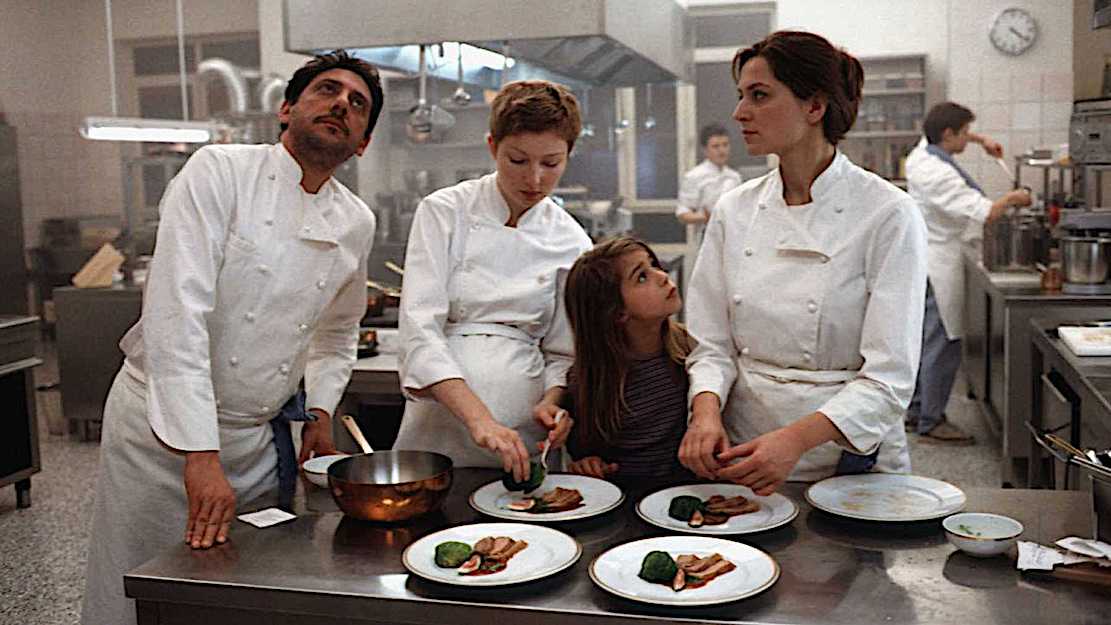 shield
against intimacy, until she is forced to take in
and
cope with her late sister’s angry daughter and to
be forced to compete with the
highly emotional, operatic charms of a new Italian
cook (Sergio Castellitto). Admirably
re-made as “No Reservations” with Catherine
Zeta-Jones and Aaron Eckhart, which
is almost as good.
shield
against intimacy, until she is forced to take in
and
cope with her late sister’s angry daughter and to
be forced to compete with the
highly emotional, operatic charms of a new Italian
cook (Sergio Castellitto). Admirably
re-made as “No Reservations” with Catherine
Zeta-Jones and Aaron Eckhart, which
is almost as good.
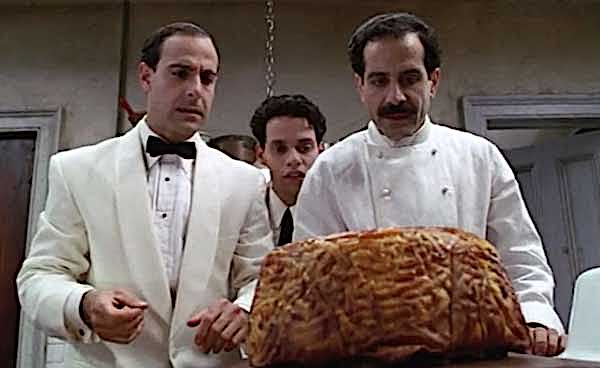
Big Night (1996)—One of the
sweetest films of brotherly love ever made, with
Tony Shalhoub and Stanley
Tucci as the owners of a 1950s New Jersey
restaurant on the brink of disaster
because the demanding chef Shalhoub refuses to
cook insipid Italian-American
food for undiscerning customers.
The feast they prepare for no-show star
Louis Prima is as overblown and
sexy as a Fellini-esque orgy, complete with the
voluptuous Minnie Driver and
Isabella Rossellini at the table, and the last
kitchen redemptive scene, played
without words between the two brothers, is as
beautiful as anything made in the
Silent Era of film.
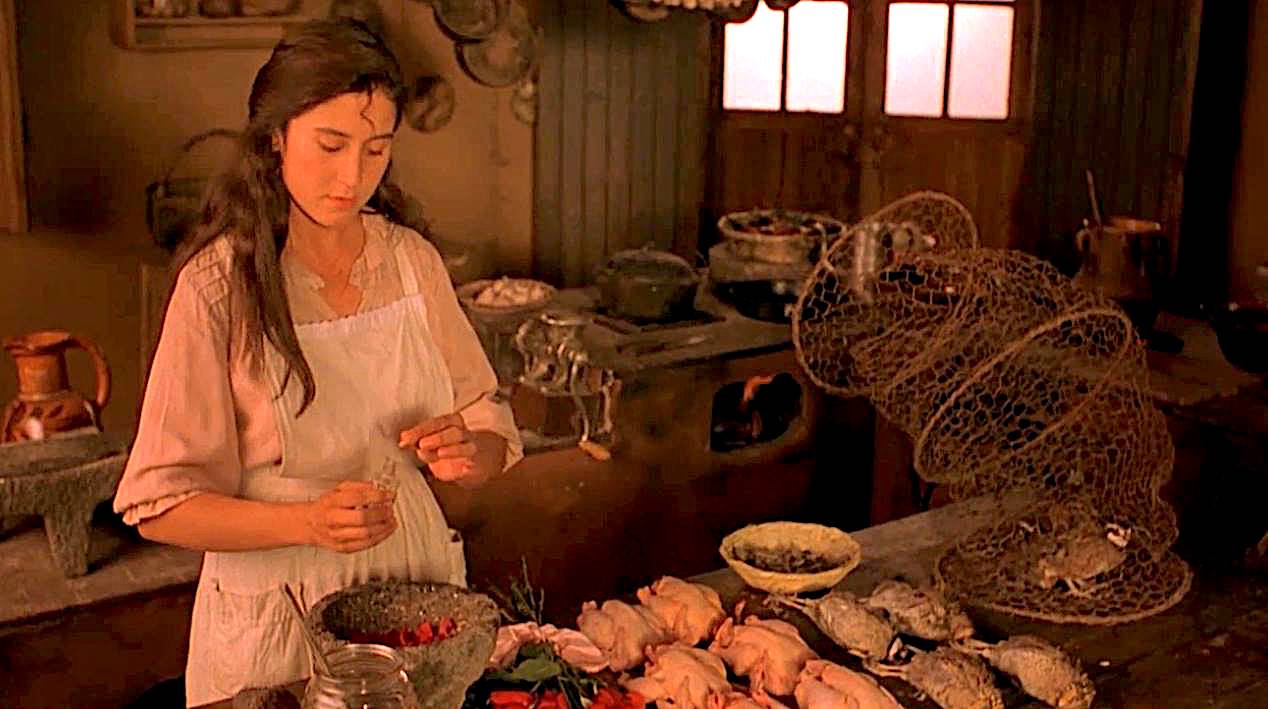
Like Water for Chocolate (1992)—Yet another Latin-American fantasy, this film tells a series of erotic stories built around recipes. The exquisite cooking of th heroine, Tita de la Garza (Lumi Gavazos), causes all sorts of passions and emotions to collide within a Mexican ranch family. The climax comes when Tita and her lover bring so much heat to the bedroom that a fire literally consumes them and the ranch house, leaving behind in the ashes only her cookbook. The double meaning of the title refers to sexual arousal, as when boiling water is poured onto chocolate.
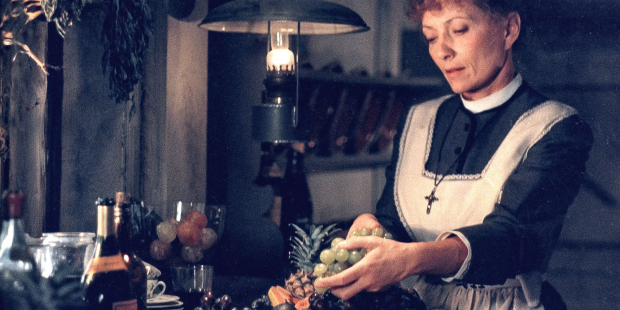 Babette’s
Feast
(1987)—I have never
entirely warmed to this Danish movie about two
sisters who live in the harsh
environment of Jutland, where pleasures of any
kind are considered quite
sinful. But the arrival of a French housekeeper
and cook, at first held suspect
for her foreign ways, brings an awakening of
modest sensual pleasure to the
townspeople. It’s pretty cold and austere
throughout, but the preparation and
enjoyment of the beautiful food is worth seeing.
Babette’s
Feast
(1987)—I have never
entirely warmed to this Danish movie about two
sisters who live in the harsh
environment of Jutland, where pleasures of any
kind are considered quite
sinful. But the arrival of a French housekeeper
and cook, at first held suspect
for her foreign ways, brings an awakening of
modest sensual pleasure to the
townspeople. It’s pretty cold and austere
throughout, but the preparation and
enjoyment of the beautiful food is worth seeing.
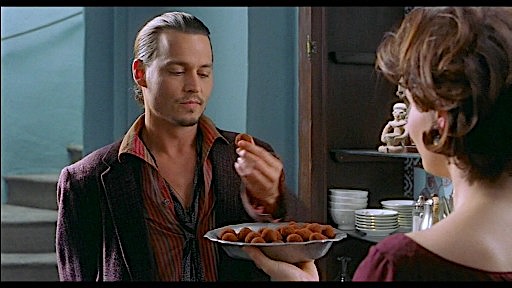
Chocolat (2000)—Though seemingly a French movie, this is actually an American film shot in Burgundy and directed by Swedish-born Lasse Hallström, starring Juliette Binoche as a mysterious unmarried mother and artisanal chocolatier arriving in a very conservative French village. Johnny Depp is a river gypsy, Judi Dench is an embittered old woman, and Alfred Molina is a rigorously religious mayor—all of whom are seduced and changed by the taste of Binoche’s remarkable chocolates. There’s also a mouthwatering scene of a bourgeois backyard roast chicken dinner, and of the debauchery of wallowing in chocolate bliss.
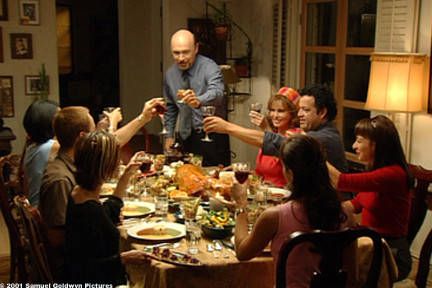
Tortilla
Soup
(2001)—A small, completely beguiling film about a
Latino L.A. family whose
widowed father and master chef (Hector Alizondo)
tries to prevent his three
daughters from leaving him for husbands, while he
himself tries as hard to keep
love at bay and to avoid a brassy, pushy woman
played with engaging vulgarity
by Raquel Welch. The youngest daughter, Carmen
(Jacqueline Obradors), cooks
with her father in beautiful scenes of closeness
and breaking away. The movie
is a remake of Ang Lee’s “Eat Drink Man Woman,”
but I find the Latino style
much more affecting.
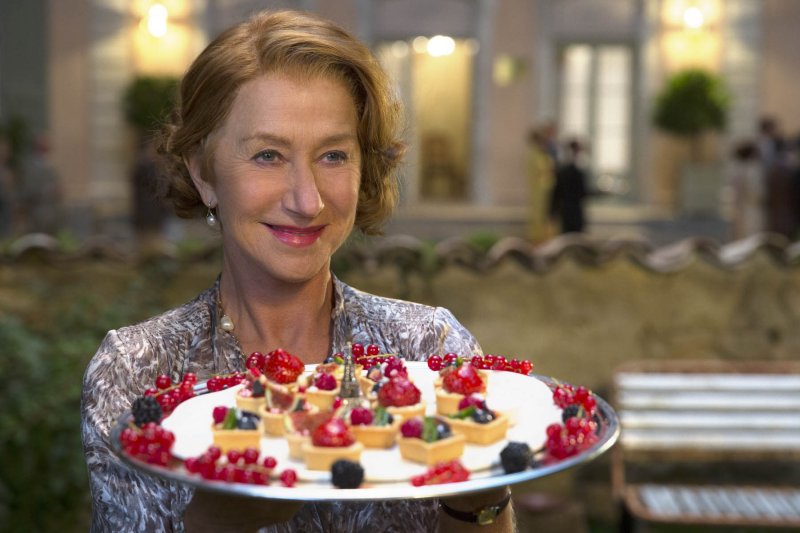
The Hundred Foot Journey (2014)—A clash of culinary and social cultures—Indian and French—begins when an expatriate Indian family buys a restaurant in a small French town and names it Maison Mumbai and eventually the son, Hassan, wins acclaim in Paris for his fusion cuisine. But the drama is the fierce competition between the family and a French restaurateur (played impeccably by Helen Mirren), who seeks to put the newcomers out of business. All is well by film’s end, united by a love of food as a bond between all people, including those who live across the street.
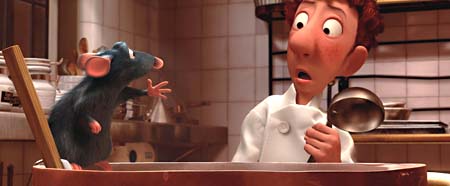 Ratatouille (2011)—One of Pixar
and Walt Disney Picture’s finest and oddest
animated features, Ratatouille
tells the story of a rat named Remy who lives
secretly in a Parisian restaurant
and learns all the chef’s secrets, which he passes
on to a young cook who
thereupon helps the restaurant win the praise of
the toughest food critic in
France (voiced by Peter O’Toole). As much for its
superb computer-generated
imagery as for its attention to every detail of a
restaurant kitchen, the
characters are fully rounded (literally and
figuratively), the rat is
goofy-looking but adorable and the whole screwy
idea works for both children
and adults.
Ratatouille (2011)—One of Pixar
and Walt Disney Picture’s finest and oddest
animated features, Ratatouille
tells the story of a rat named Remy who lives
secretly in a Parisian restaurant
and learns all the chef’s secrets, which he passes
on to a young cook who
thereupon helps the restaurant win the praise of
the toughest food critic in
France (voiced by Peter O’Toole). As much for its
superb computer-generated
imagery as for its attention to every detail of a
restaurant kitchen, the
characters are fully rounded (literally and
figuratively), the rat is
goofy-looking but adorable and the whole screwy
idea works for both children
and adults. 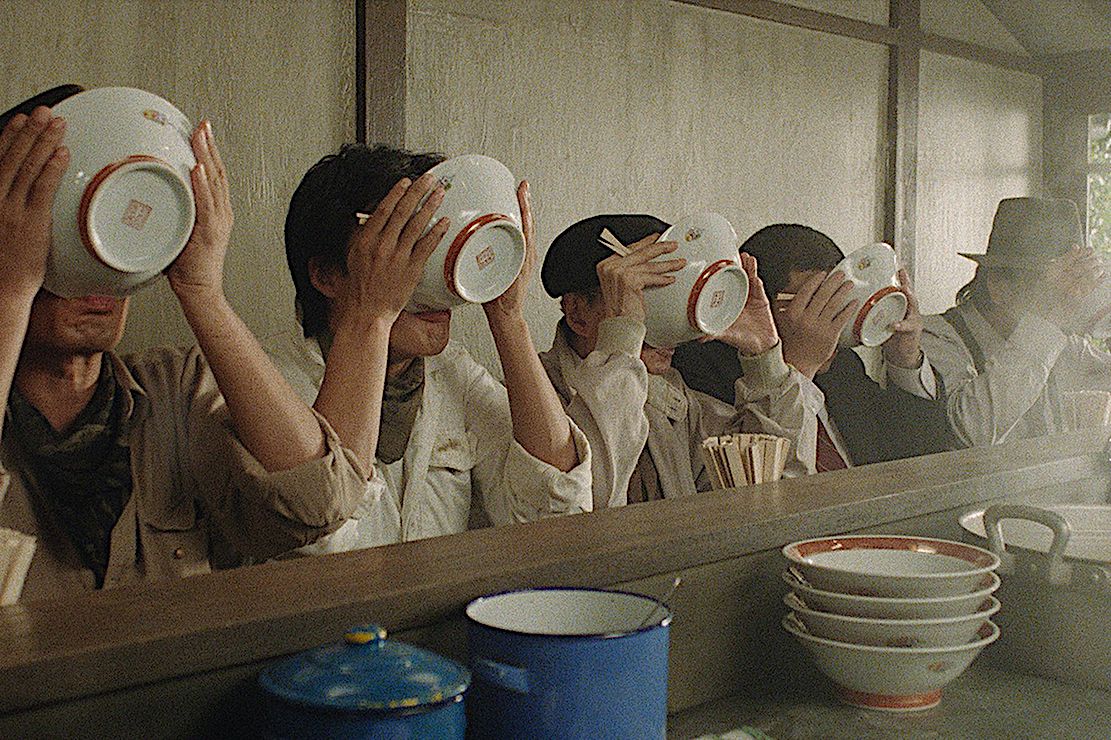
Tampopo (1985)—Marketed as a “ramen western,” Tampopo (the name means “dandelion”) is a comedy about the search for secret recipes for noodles, but there are so many more smaller stories that include two lovers whose erotic experiments center around food, a women’s etiquette class on how to slurp noodles and much more. It is fast paced, borrows from American movie stereotypes and shows the way noodles are as much an obsession to the Japanese as pasta is to Italians.
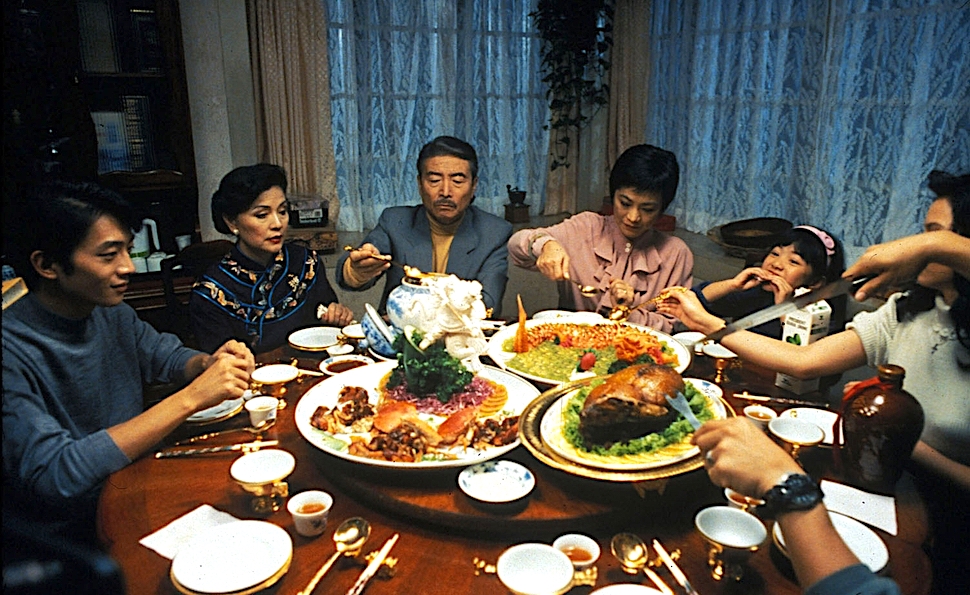
Eat Drink Man Woman (1994)—Directed by
Ang Lee and set in Taipei, Taiwan, is a tribute to
the joys and frustrations of
the family Sunday dinner, enforced by a stern
widower with three independent
daughters who try with respect to alter their
father’s stringent views of how
they should grow up, act and marry. The viewer
will easily fall in love with
all these characters for whom the dinner table is
both a social necessity and a
battlefield.
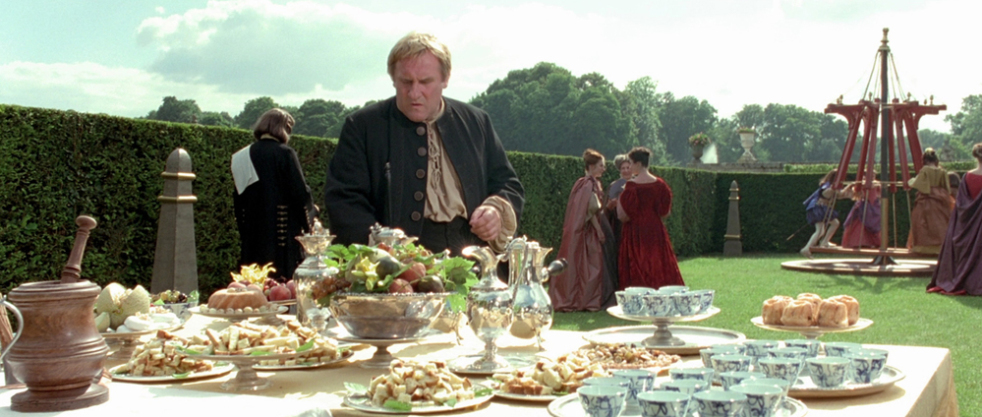
Vatel (2000)—Not really a great film by any means, but a view of the decadence of the aristocratic courts in the time of France’s Louis XIV, when meals would extend over days and hosts tried to outdo each other through sheer extravagance. François Vatel, a real-life chef played by Gerard Depardieu, is a demanding perfectionist who would rather kill himself than work for Louis. Sumptuous in the extreme, it is also fascinating in its kitchen detail.
❖❖❖
By John Mariani
Since, for the time being, I am unable to write about or review New York City restaurants, I have decided instead to print a serialized version of my (unpublished) novel Love and Pizza, which takes place in New York and Italy and involves a young, beautiful Bronx woman named Nicola Santini from an Italian family impassioned about food. As the story goes on, Nicola, who is a student at Columbia University, struggles to maintain her roots while seeing a future that could lead her far from them—a future that involves a career and a love affair that would change her life forever. So, while New York’s restaurants remain closed, I will run a chapter of the Love and Pizza each week until the crisis is over. Afterwards I shall be offering the entire book digitally. I hope you like the idea and even more that you will love Nicola, her family and her friends. I’d love to know what you think. Contact me at loveandpizza123@gmail.com
—John Mariani
To read previous chapters go to archive (beginning with March 29, 2020, issue.
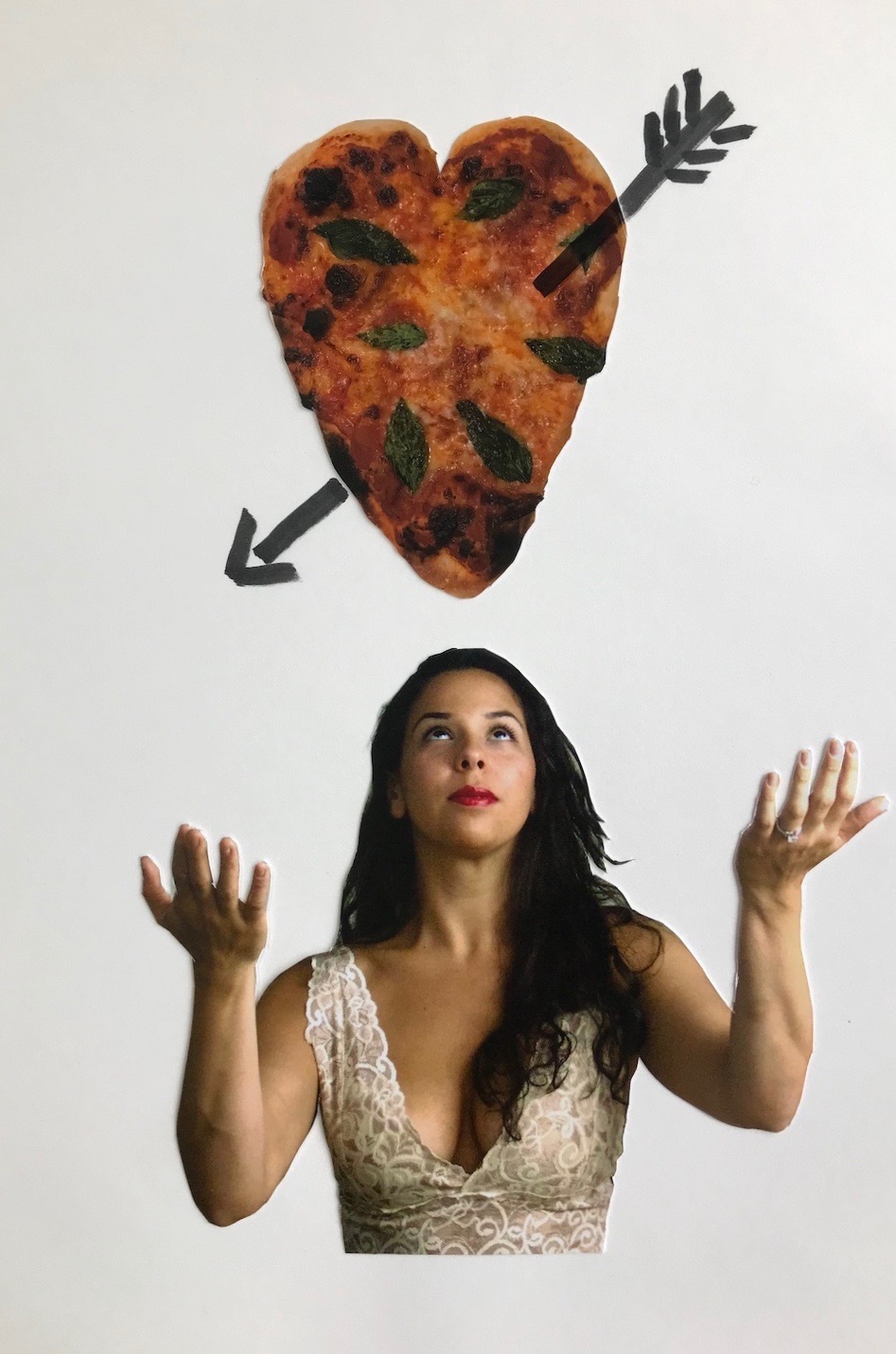
By John Mariani
Cover art by Galina Dargery
CHAPTER TWO
It was Teresa Santini
who
told her children of Michelangelo and Leonardo,
of Dante and Manzini, and
beyond that of the contributions the Romans had
made to the world, followed by
the extraordinary achievements of the
Renaissance.
As happens with most children,
Teresa’s
attempts to impress her family with such a
glorious legacy fell on
dispassionate ears, for, after all, the children
had spent their days in school
learning about Washington, Lincoln and Roosevelt,
and they took for granted
that Fiorello LaGuardia was one of their own,
despite his mother being
half-Jewish.
So, although Teresa had always
favored her
granddaughter Nicola because of her intelligence
and beauty, she never deprived
her other progeny of abundant affection, presents
and individualized care,
sitting for hours beside the bedside when one had
the measles, going over their
lessons for their First Holy Communion and telling
them all the Italian fairy
tales they loved, filled with princes and queens,
witches and ogres, wolves and
swans.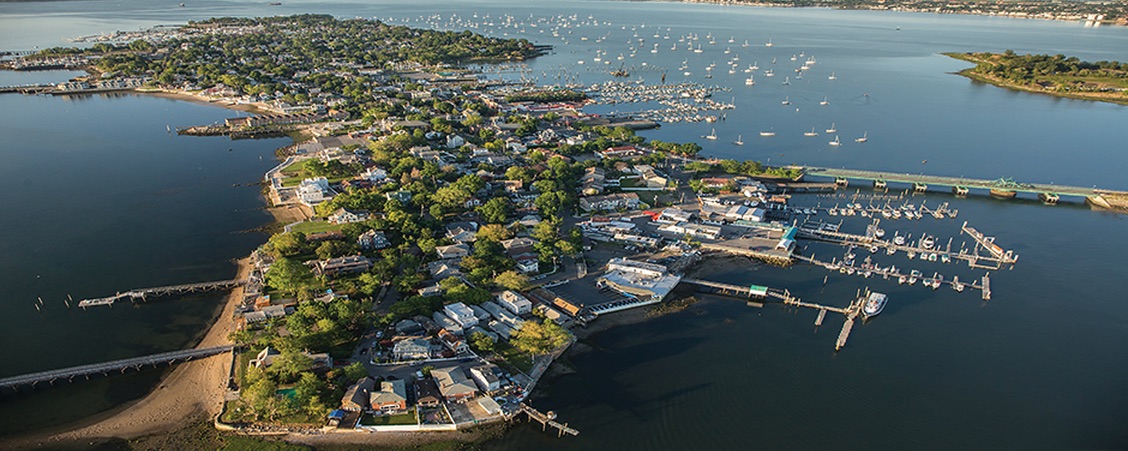
CITY ISLAND IN
THE BRONX
Nicola had a good deal of her grandmother
in her and had long believed
that she would find her own destiny outside of the
neighborhood.
For however much she loved all her
relatives and was proudly Italian-American, her
dreams were of those places
that her grandmother had always told her stories
about. One
day, Nicola told herself, she would
see Rome, Florence, Venice and Bologna—a kind of
reverse emigration Teresa had
encouraged in her granddaughter.
Nicola’s mother and father,
both born in the
States after the First World War, were hard
working and had done very well for
the family.
Her father, Antonio
Santini, called Nino by everyone, had picked up his father’s talent for tailoring
and had worked his way up to a
senior manager’s position at a prestigious women’s
coat company named Originala
in Manhattan.
Nicola’s mother,
Anna, whose parents came from Naples, had
completed high school and stenography
classes and worked at some good secretarial jobs
before her four children were
born—Anthony Jr., Roseanne, Nicola, Natalie and
Tommy. It
went without saying she would stay
home and raise the children when they came.
Nino
had
tried to enlist in the Navy but was turned down
because of a bad back, so
during the war he was put in charge of making
military uniforms at his company’s
factory. He
and his workers were
very proud when they learned that many of the
American sailors wore his company’s
pea coats and WACs kept warm in Originala
overcoats.
The
family had always lived in the Belmont
neighborhood—made famous in the 1950s as
the place where Dion and the Belmonts invented
doo-wop music.
By 1980 the Santinis had moved into a
two-story, four-bedroom house on Hughes Avenue,
just a block from Teresa and
Federico Santini.
By
then
Anthony Jr., had gone to junior college at
C.C.N.Y., but found he liked
the local restaurant business and had moved up
from waiter to cook to manager
of an Arthur Avenue pizzeria-restaurant named
Bella Napoli, which he hoped to buy
someday from its aging owner.
Roseanne married her high school sweetheart
and had a baby within a year—Teresa’s
first great-grandchild!—while Natalie and Tommy
were both still in high school.
Tommy, however, had shown extraordinary aptitude
in math while in grammar
school, skipped two grades and was accepted into
the prestigious Bronx High
School of Science in Bedford Park.
Tommy already spoke good Italian and, while
at school, picked up
passable Greek.
(All the Santini
children had taken Latin in school.)
Nicola, who everyone whispered
was the most
beautiful of the children, had never for a moment
doubted she would go to
college, and, buoyed by good grades and the
anecdotal education she received
from her grandmother, she won a partial
scholarship to Columbia University,
where she majored—as a star student—in art
history, specializing, as might be
expected, in the Italian Renaissance.
The Santinis
were solidly middle class, nudging
into the upper middle class, so Nino used to
pretend exasperation by saying, “If
I didn’t have all these damn kids, by now we’d be
living in Westchester!”—the
affluent county to the north—to which his wife
would say, “Nino, what an awful
thing to say!
We are the luckiest family we
know. Everybody’s
healthy, we eat
like kings, have nice clothes and everybody’s
doing fine.”
Nino would smile grandly,
spread out his arms
and say, “Hey, I’m kidding, I’m kidding!
I’d rather live in the poorhouse with these kids
than in a palace without them.”
Then, still joking, “Well, maybe not with this
one!” and he’d grab the cheek of the closest
child, who’d pull away and growl, “Very
funny.”
Anna, whose own immigrant
parents had come from
poverty and had passed away after the war, would
shake her head gravely and
remind her husband that it was stupid even to joke
about a poorhouse, and then
she’d go off about her business.
But Nino never tired of the joke.

CROSS BRONX
EXPRESSWAY
Still, in the years they’d lived in Belmont,
many of the neighborhoods around them, especially
to the south, had begun to
decay rapidly.
To a large extent
that decay was set in motion when the building of
the Cross Bronx Expressway, linking
the George Washington Bridge
on the Hudson River to
the New England Thruway on Long Island Sound,
disemboweled the borough,
disrupting old ethnic neighborhoods of Italians,
Jews, Irish, blacks and
Puerto Ricans that had co-existed for
decades. Many old timers who could afford to moved
to north Westchester or
Rockland counties or west to New Jersey.
Maintenance of the old apartment buildings
declined, crime grew rampant,
gangs of teenagers roamed the streets, heroin use
festered like a pox, and the
quality of the public schools—once the glory of
the New York City education
system—dropped precipitously. The
remaining white residents yanked their kids out
and sent them to private and
parochial schools, with names like St. Helena, St.
Raymond and All Hallows, all
run by various orders of nuns, brothers or
priests. All the Santini children
had, in fact, gone to parochial schools. Tuition
was low, but too much for the
new immigrant minorities.
Walking the streets of most
Bronx neighborhoods
in the 1970s and early 1980s, even the once
glorious Grand Concourse, had
become dangerous. Teenage gangs had long been a
part of the Bronx—the Golden
Guineas and the Fordham Baldies were well known in
the 1950s—but now the kids
carried guns and used them against rival gangs
with names like the Savage Skulls,
Ghetto Brothers, Black Spades and the Spanish
Mafia.
The Santinis were well aware of
all the crime
and poverty that swirled around Belmont. But,
owing to the solidity of the
Italian neighborhood, where everyone watched out
for one another and where the
restaurants and pizzerias threw light onto the
streets till midnight, Belmont
continued to have one of the lowest crime rates in
the city. The
residents would say that you could
leave your daughter alone in the back seat of a
Cadillac convertible and
neither she nor the car would ever be touched.

Above
Fordham Road,
where Fordham
University, a Jesuit
school, began its stretch northward, the Bronx was
still green with parklands
that dwarfed even Manhattan’s Central Park. To the east was Orchard
Beach, with its majestic though
decaying art déco bathhouses. A little south of
that was a maritime community
called City Island, which jutted out into the
rough Long Island Sound and
looked exactly as it had since before the war. Its
one-mile Main Street was
flanked with sea captains’ 19th century houses,
seafood restaurants, marinas
and shipyards where a dozen 12-meter yachts were
built for the America’s Cup
races.
ORCHARD BEACH
So, while
Anthony Santini harbored a dream to someday move
his family away from the
blight around him, he and his family were very
happy living exactly where they
did in Belmont, where everything seemed—for the
time being—safe and sound. In
fact, Anthony worried more about his
daughter Nicky traveling south to Harlem to attend
her classes at Columbia, so
that if their schedules coincided, he would always
pick her up in his car on
the way home from Manhattan, meeting her at the
school’s majestic Delacorte
Gates on 116th Street and Broadway with its plaque
that read "May All
Who Enter Find Peace And Welcome."
And if Nicky
was coming home late after
classes, or hanging out with friends, Nino would
lie awake, waiting for the
sound of her key in the lock, remembering a time
when no one in Belmont locked
their doors.
Then he’d sigh to
Anna, “She’s home. She’s safe and sound,” then
drop off to sleep.
❖❖❖
THE WINES OF UMBRIA
By Patricia Savoie
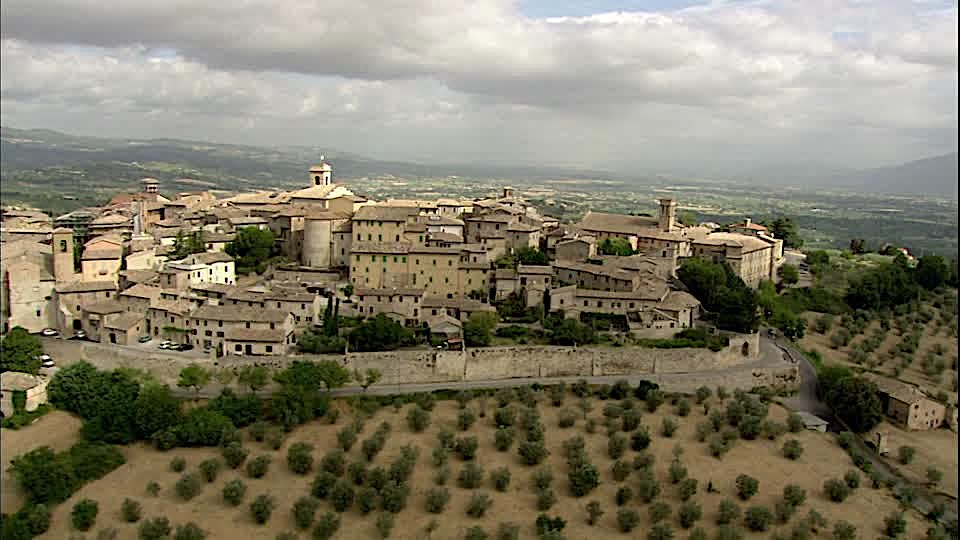
[Note: This visit took
place just before
coronavirus began to sweep through Italy.]
Located
in the center of Italy, north of Rome
and east of Tuscany, Umbria is one of Italy’s
landlocked regions. But water is
about the only thing it is missing. In fact, it
rivals Tuscany in almost all
aspects. Its medieval hill towns—like Orvieto
(outstanding white wines), Assisi
(of Saint Francis fame), Spoleto (the opera) and
Perugia (chocolates)—rolling
green hills, olive groves and acres of vineyards,
and its excellent food and
wine, compete easily with its western neighbor.
And Umbria is the site of the
largest lake in Italy: Lake Trasimeno. And another
thing missing is crowds of
tourists.
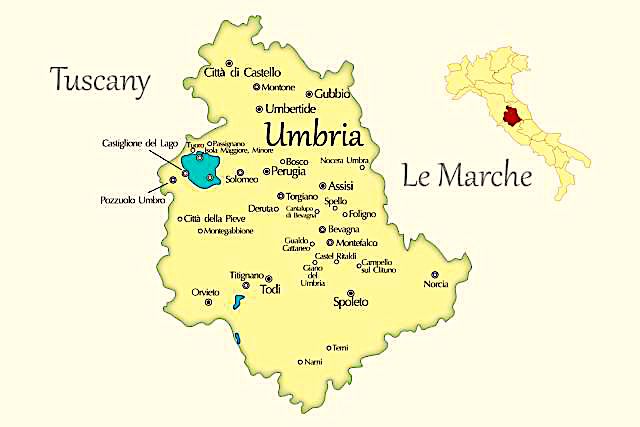 Umbria is
home to several excellent grape varieties; the top
three in plantings are the
red Sangiovese (22%) and the whites Trebbiano (17%)
and Grechetto (13%). But it
also is the home of the native grape Sagrantino.
Grown mainly in Montefalco,
this red grape produces a powerful and tannic wine,
Montefalco Sagrantino,
which is 100% Sagrantino. Its quality is evidenced
by its DOCG designation. The
wine often shows great complexity and ages very well
(20+ years, though some
winemakers say up to 50 years).
Umbria is
home to several excellent grape varieties; the top
three in plantings are the
red Sangiovese (22%) and the whites Trebbiano (17%)
and Grechetto (13%). But it
also is the home of the native grape Sagrantino.
Grown mainly in Montefalco,
this red grape produces a powerful and tannic wine,
Montefalco Sagrantino,
which is 100% Sagrantino. Its quality is evidenced
by its DOCG designation. The
wine often shows great complexity and ages very well
(20+ years, though some
winemakers say up to 50 years).
I traveled to Montefalco for the
Anteprima of
Sagrantino in February, when the 2016 vintage was
officially presented. The
Consorzio Tutela Vini Montefalco, a trade
association, recently started
assigning a star rating to vintages. Both 2016 and
2015 achieved the top: five
stars.
Grape growing and
winemaking around Montefalco dates to pre-Roman
times. Today, the region
produces two Denominazione
di Origine Controllata e Garantita (DOCG) classed
wines, 13 Denominazione di Origine Controllata
(DOC) and six Indicazione
Geografica Tipica (IGT),
which are often made with international grape
varieties like Merlot or Cabernet
Sauvignon.
Sagrantino
is
grown only in the Montefalco region. but the grape
almost became a victim of
Italy’s industrialization and urbanization in the
1960s-70s. By the early
1970s, there were only 25 acres of Sagrantino in
existence and a handful of
small producers. But a few families believed in
the grape and began to re-plant
the grapevines. The Arnaldo Caprai, Antonelli,
Adanti and Benincasa families were
responsible for its survival. The grape makes
rich, full wines with aggressive
tannins. To help tame these tannins, there is a
minimum, mandatory aging of 37
months (including one year in oak barrels) before
the wine can be released. The
best vintages can age for decades. It also tends
to be high in alcohol, with
15% or 15.5% 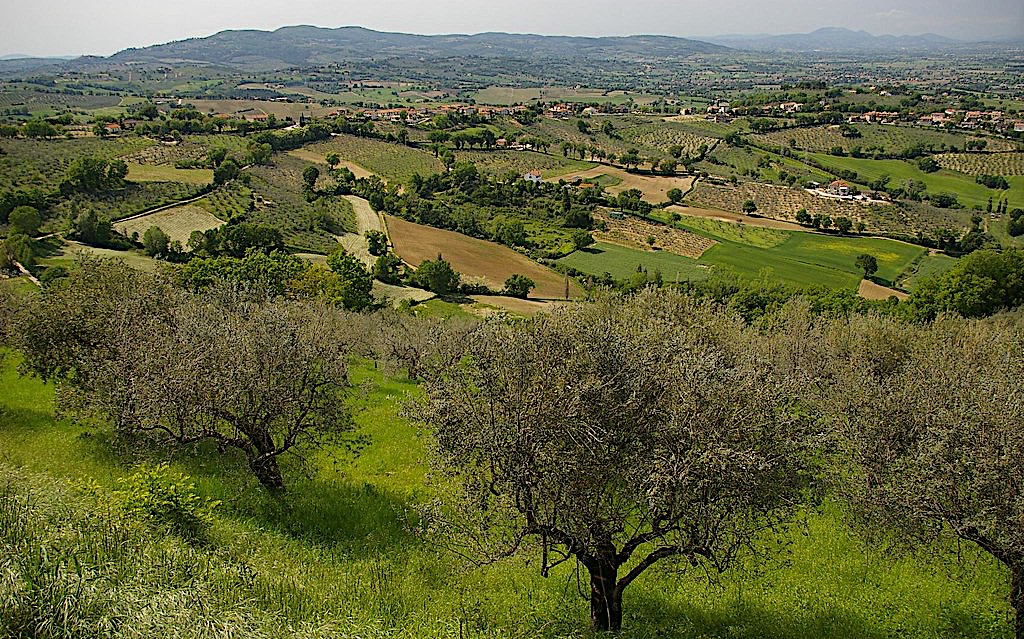 not
unusual.
not
unusual.
The second DOCG wine from
Sagrantino is
Sagrantino Passito, a sweet wine made from 100%
Sagrantino grapes, which
are dried
in air for at least two
months to concentrate the juice. The
sweetness of the wine is offset by its high
level of tannins.
The second
most important wine in the Montefalco region is Montefalco Rosso DOC, made
mainly from the Sangiovese grape,
like the Chianti and Montalcino of neighboring
Tuscany. It is produced from
60–80% Sangiovese, 10–25% Sagrantino and at most 30%
other red grapes. Aging
of 18 months is standard. A few Riservas are made
and must age for at least 30
months, with 12 months in oak.
The Rossos
are lighter and easier to drink than the
Sagrantinos. In addition to the
Montefalco area, a small amount of Rosso is made in
the Torgiano region. Rosso
di Torgiano is made with 50–100% Sangiovese grapes.
Its best known producer is
the Lungarotti family, who produce Rubesco, a
premium wine.
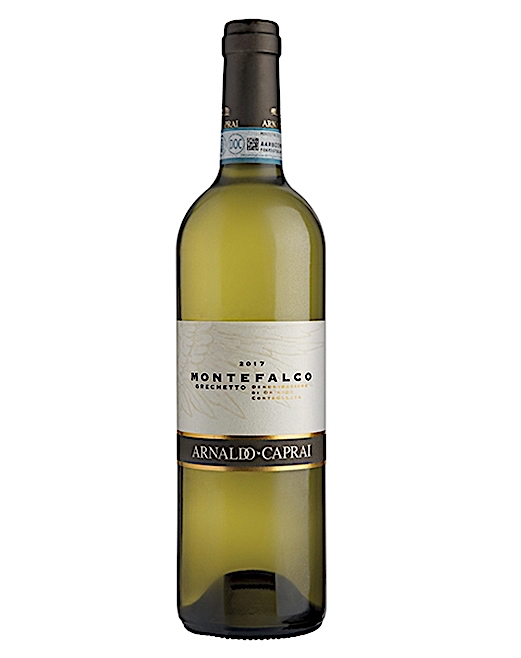 There
are
two Umbrian whites that are important: Grechetto and
Trebbiano Spoletino.
Grechetto is the primary grape in the wines from
Orvieto, along with Trebbiano
and other local grapes. It is crisp, with citrus and
green apple notes. The
second is Trebbiano Spoletino, which is not related
to Trebbiano Toscano. There
is very little Spolentino grown, and winemakers are
working with it to
determine how best to handle it.
There
are
two Umbrian whites that are important: Grechetto and
Trebbiano Spoletino.
Grechetto is the primary grape in the wines from
Orvieto, along with Trebbiano
and other local grapes. It is crisp, with citrus and
green apple notes. The
second is Trebbiano Spoletino, which is not related
to Trebbiano Toscano. There
is very little Spolentino grown, and winemakers are
working with it to
determine how best to handle it.
Food in Umbria is a delight. Salumi and
cured meats made from pork
and wild boar are excellent. Black truffles are
found in abundance in its
forests and are liberally grated over lovely pasta
dishes or incorporated with
cheeses. Lentils from the Castelluccio valley are
sought out by chefs. Pigeon
and porchetta
are perhaps the best in
Italy. Olive trees are everywhere, and there are
five separate DOP-classified
olive oils. 
Here are
some of the best wines I tasted at the Anteprima
event and on visits to a
number of wineries.
Antonelli:
This is one of the oldest wine estates in Umbria.
The family has owned it since
1881, and it is managed by Filippo Antonelli. Its
120 acres of vines have been
certified organic since 2012. The 2018 Grechetto is
fresh and crisp and the
Trebbiano Spoletino is one of the best of this
variety ($13/$18). The
Montefalco Rosso 2016 and 2017 ($18) have good fruit
and acid balance. The
Sagrantino 2016 (2015 and several earlier vintages
in U.S. $34-43)
is a fine example of the grape.
Antonelli has the only single-vineyard
Sagrantino—Chiusa di Pannone Sagrantino,
The 2012 shows its 30 months in oak but is elegant.
The 2008 is more refined
($48/$60).
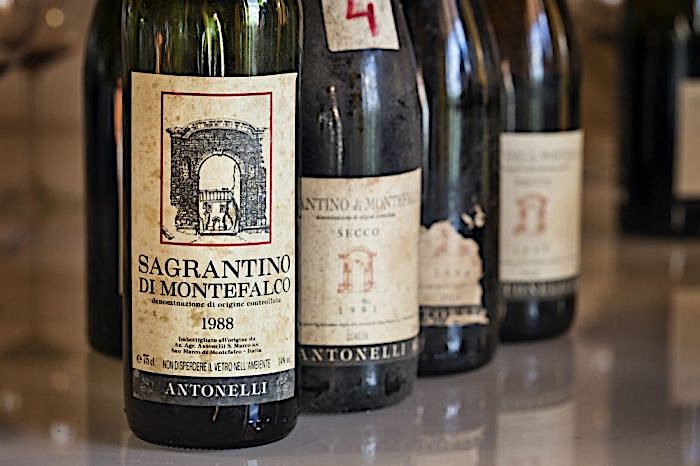 Lungarotti: This is the oldest
winery in Umbria, having been established in 1862.
It is also one of the
larger, with 620 acres. The 2016 Rubesco Rosso
Torgiano ($14)
is a remarkable wine, with notes of
black cherry and pepper. Crisp acidity balances the
fruit.
Lungarotti: This is the oldest
winery in Umbria, having been established in 1862.
It is also one of the
larger, with 620 acres. The 2016 Rubesco Rosso
Torgiano ($14)
is a remarkable wine, with notes of
black cherry and pepper. Crisp acidity balances the
fruit.
Torgiano Rosso Riserva
DOCG (current vintage 2009 -$60) that is
worth
finding. The
2016 Montefalco Rosso
has a big fruit nose and soft tannins (2015 in U.S.
$22). Their Sagrantino 2016
explodes with garrigue and cocoa (2015 U.S. $45).
DiFilippo: Three
generations of
the family farm 75 acres of land, some of it
biodynamically, where horses are
used to work the land, and geese roam the vineyards.
The 2019 Grechettto ($20)
is deep in color with some salinity. The 2015
Sagrantino is full bodied with
notes of resin ($42). They make a lovely Sagrantino
Passito 2015 that achieves
a perfect sweet/acid balance ($50 half bottle).
Arnaldo-Caprai: The 2018
Grechetto (above)
is
crisp and refreshing ($13). The 2016 Montefalco
Sagrantino has lots of sweet
fruit and tannins. (The 2013 is currently available
in U.S. $37.) The 2016
Montefalco Rosso (2015 in U.S.$15) is easy to drink.
Montioni : A
small family-owned winery. The 2018
Umbria Grechetto ($19) has nice acidity and
minerality. The 2015 Sagrantino is
dry with good fruit ($35). The 2017 Montefalco Rosso
($24) shows notes of prune
and coffee. Needs
more time.
Goretti 2015 Montefalco Sagrantino ($36):
full-bodied with cherry and licorice notes.
 DEPARTMENT OF WHO CARES?
DEPARTMENT OF WHO CARES?
“I had already eaten lunch by the
time we pulled into El
Ruso, a tiny
taco truck nestled in a tiny parking lot in L.A.’s
Boyle Heights neighborhood. Was I hungry? Not at
all. Was I, perhaps, not in the best mood because just hours
ago I had taken a 5 a.m. flight from New York City
to Los Angeles? Ask my husband and my mom. These
delicate situations—combined with me forcing them,
just as stuffed and lethargic as I am, to eat a
second lunch, hobbit style—seemed perfectly primed
for a game of passive-aggressive complaining.
(This is what conflict looks like for my family!)
And that might have very well happened, if the
tacos at El Ruso weren’t so incredible.”—Elyse
Inamine, “I
Will Always Have Room for El Ruso’s Extremely
Dialed-In Tacos,” Bon Appetit (Feb 27. 2020)

"As rides go,
the last
20 years have
pretty much had it all. Thrills, spills, twists, turns,
all at blinding speed—never
mind those few flips upside down they didn’t warn you
about—and here we are,
just talking about the food. You can get off rides, but
this one doesn’t seem
to want to end, with city after city across the United
States growing their
respective restaurant cultures so quickly, it’s almost
dizzying, even if we’re
still terribly excited for what’s next."—David Landsel,
" The Best Classic Restaurants in Everey State," Food & Wine
(1/14/20)
Any of John Mariani's books below may be ordered from amazon.com.
 The Hound in Heaven
(21st Century Lion Books) is a novella, and
for anyone who loves dogs, Christmas, romance,
inspiration, even the supernatural, I hope you'll find
this to be a treasured favorite. The story
concerns how, after a New England teacher, his wife and
their two daughters adopt a stray puppy found in their
barn in northern Maine, their lives seem full of promise.
But when tragedy strikes, their wonderful dog Lazarus and
the spirit of Christmas are the only things that may bring
his master back from the edge of despair.
The Hound in Heaven
(21st Century Lion Books) is a novella, and
for anyone who loves dogs, Christmas, romance,
inspiration, even the supernatural, I hope you'll find
this to be a treasured favorite. The story
concerns how, after a New England teacher, his wife and
their two daughters adopt a stray puppy found in their
barn in northern Maine, their lives seem full of promise.
But when tragedy strikes, their wonderful dog Lazarus and
the spirit of Christmas are the only things that may bring
his master back from the edge of despair. WATCH THE VIDEO!
“What a huge surprise turn this story took! I was completely stunned! I truly enjoyed this book and its message.” – Actress Ali MacGraw
“He had me at Page One. The amount of heart, human insight, soul searching, and deft literary strength that John Mariani pours into this airtight novella is vertigo-inducing. Perhaps ‘wow’ would be the best comment.” – James Dalessandro, author of Bohemian Heart and 1906.
“John Mariani’s Hound in Heaven starts with a well-painted portrayal of an American family, along with the requisite dog. A surprise event flips the action of the novel and captures us for a voyage leading to a hopeful and heart-warming message. A page turning, one sitting read, it’s the perfect antidote for the winter and promotion of holiday celebration.” – Ann Pearlman, author of The Christmas Cookie Club and A Gift for my Sister.
“John Mariani’s concise, achingly beautiful novella pulls a literary rabbit out of a hat – a mash-up of the cosmic and the intimate, the tragic and the heart-warming – a Christmas tale for all ages, and all faiths. Read it to your children, read it to yourself… but read it. Early and often. Highly recommended.” – Jay Bonansinga, New York Times bestselling author of Pinkerton’s War, The Sinking of The Eastland, and The Walking Dead: The Road To Woodbury.
“Amazing things happen when you open your heart to an animal. The Hound in Heaven delivers a powerful story of healing that is forged in the spiritual relationship between a man and his best friend. The book brings a message of hope that can enrich our images of family, love, and loss.” – Dr. Barbara Royal, author of The Royal Treatment.
 |
The Encyclopedia of American Food and Drink by John F. Mariani (Bloomsbury USA, $35) Modesty forbids me to praise my own new book, but let me proudly say that it is an extensive revision of the 4th edition that appeared more than a decade ago, before locavores, molecular cuisine, modernist cuisine, the Food Network and so much more, now included. Word origins have been completely updated, as have per capita consumption and production stats. Most important, for the first time since publication in the 1980s, the book includes more than 100 biographies of Americans who have changed the way we cook, eat and drink -- from Fannie Farmer and Julia Child to Robert Mondavi and Thomas Keller. "This book is amazing! It has entries for everything from `abalone' to `zwieback,' plus more than 500 recipes for classic American dishes and drinks."--Devra First, The Boston Globe. "Much needed in any kitchen library."--Bon Appetit. |
"Eating Italian will never be the same after reading John Mariani's entertaining and savory gastronomical history of the cuisine of Italy and how it won over appetites worldwide. . . . This book is such a tasteful narrative that it will literally make you hungry for Italian food and arouse your appetite for gastronomical history."--Don Oldenburg, USA Today. "Italian
restaurants--some good, some glitzy--far
outnumber their French rivals. Many of
these establishments are zestfully described
in How Italian Food Conquered the World, an
entertaining and fact-filled chronicle by
food-and-wine correspondent John F.
Mariani."--Aram Bakshian Jr., Wall Street
Journal.
"Equal parts
history, sociology, gastronomy, and just
plain fun, How Italian Food Conquered the
World tells the captivating and delicious
story of the (let's face it) everybody's
favorite cuisine with clarity, verve and
more than one surprise."--Colman Andrews,
editorial director of The Daily
Meal.com. "A fantastic and fascinating
read, covering everything from the influence
of Venice's spice trade to the impact of
Italian immigrants in America and the
evolution of alta cucina. This book will
serve as a terrific resource to anyone
interested in the real story of Italian
food."--Mary Ann Esposito, host of PBS-TV's
Ciao
Italia. "John Mariani has written the
definitive history of how Italians won their
way into our hearts, minds, and
stomachs. It's a story of pleasure over
pomp and taste over technique."--Danny Meyer,
owner of NYC restaurants Union Square
Cafe, The Modern, and Maialino.
|
 |
 |
 |
 |
 |
 |
 |
 |
 Everett Potter's Travel Report:
Everett Potter's Travel Report: 
 Eating Las Vegas
JOHN CURTAS has been covering the Las Vegas
food and restaurant scene since 1995. He is
the co-author of EATING LAS VEGAS – The 50
Essential Restaurants (as well as
the author of the Eating Las Vegas web site: www.eatinglasvegas.
He can also be seen every Friday morning as
the “resident foodie” for Wake Up With the
Wagners on KSNV TV (NBC) Channel 3 in
Las Vegas.
Eating Las Vegas
JOHN CURTAS has been covering the Las Vegas
food and restaurant scene since 1995. He is
the co-author of EATING LAS VEGAS – The 50
Essential Restaurants (as well as
the author of the Eating Las Vegas web site: www.eatinglasvegas.
He can also be seen every Friday morning as
the “resident foodie” for Wake Up With the
Wagners on KSNV TV (NBC) Channel 3 in
Las Vegas.
MARIANI'S VIRTUAL GOURMET
NEWSLETTER is published weekly. Publisher: John Mariani. Editor: Walter Bagley. Contributing Writers: Christopher Mariani,
Robert Mariani, Misha Mariani, John A. Curtas, Gerry Dawes, Geoff Kalish,
and Brian Freedman. Contributing
Photographer: Galina Dargery. Technical
Advisor: Gerry
McLoughlin.
If you wish to subscribe to this
newsletter, please click here: http://www.johnmariani.com/subscribe/index.html
© copyright John Mariani 2020

